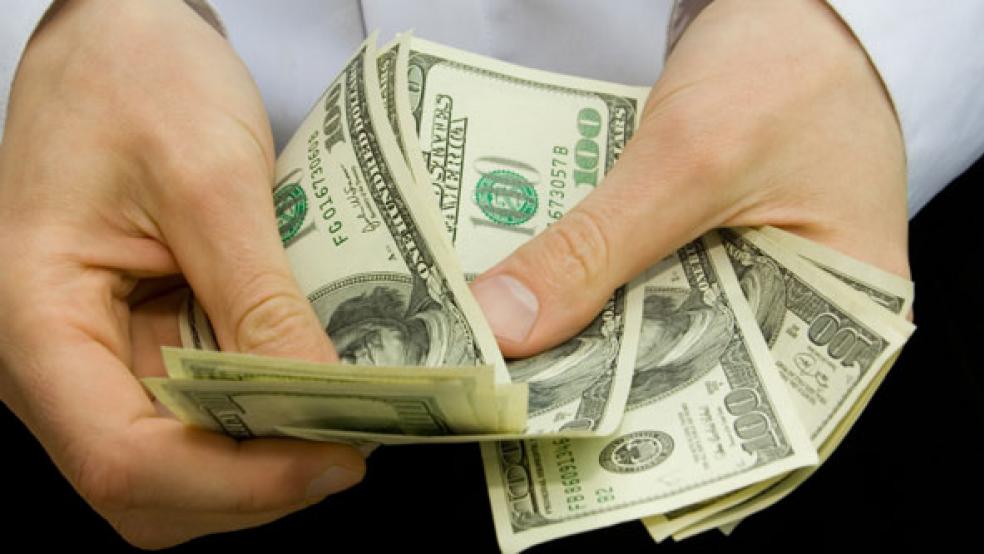BP did it. Cisco did it. General Electric, Macy’s and UPS too. Hasbro and Mattel, locked in a battle for dominance of the toy market, both did it. Even Rio Tinto did it, despite having to write down $8.9 billion of its investment in struggling Canadian aluminum producer Alcan.
“It” in this case is announce a higher dividend payout to shareholders. An ever-larger number of companies are returning a higher portion of their cash to investors. Of course, some big names are resisting the trend. Despite sitting on mountains of cash that total more than the GDP of several small independent nations, Apple (AAPL) hasn’t announced a dividend, defying expectations and keeping its shareholders on tenterhooks. And Saudi prince Alwaleed bin Talal told CNBC he is ready to demand that Citigroup (C) CEO Vikram Pandit pay out a higher dividend to shareholders (of whom bin Talal is one of the biggest) if the bank doesn’t announce a dividend hike on its own fairly promptly.
Dividend hikes are most common in the early months of the year, as companies close the books on the previous year’s financial statements. In January 2012, a total of 32 companies in the S&P 500 boosted dividends and another initiated a dividend payment, according to data compiled for The Fiscal Times by Birinyi Associates. That’s nearly double the pace of such moves made by S&P 500 companies in January 2010. Indeed, the number of dividend increases announced by S&P 500 companies throughout 2011 reached 348, compared to only 261 in 2010.
That’s good news for investors, since stock prices have, until very recently, been extremely sluggish and anyone in the market for income has had relatively few safe high-yielding options of late. At the same time, personal incomes have stagnated in recent years. Indeed, by some calculations, dividend payments were responsible for 20 cents out of every dollar of extra income Americans have earned since the summer of 2009.
As corporate balance sheets remain the most robust around – far more cash-rich than those of individuals or governments – the pressure on them to pay out still more in dividends is only going to grow, and rightly so. After all, as Birinyi Associates reported today, there was a 32 percent slump in the value of stock buyback authorizations (another popular use of cash in an attempt to boost the value of the stock) during January.
But the growing interest in dividends on the part of companies paying them and investors gratefully cashing the checks means that the latter will need to think carefully about which dividend-payers are most attractive. The “Dogs of the Dow” was one strategy that worked particularly well last year, as noted in this space previously.
One alternative, suggests John Kozey, an analyst with the StarMine research team at Thomson Reuters, is to focus on a “hi lo” portfolio, made of companies that have high yields but low payout ratios. These, he explains, are companies that have the financial strength to pay an attractive dividend while still retaining a significant portion of their cash (the low payout ratio part of the calculation) to invest in their existing business or new ventures, or simply to keep on hand as a safety cushion. While the list of these companies will fluctuate along with their share prices and yields, one company that recently made the list was chemical giant DuPont (DD). Other companies that fit the bill outside the Standard & Poor's 500-stock index include M&T Bank (MTB) and chipmaker Linear Technology (LLTC).
Kozey has monitored hypothetical "hi lo" portfolios he constructed in January 2010 and January 2011: the companies identified at the beginning of those years outperformed the S&P 500 by 2.5 percentage points and more than 13 percentage points, respectively.
Historically, February is the month that has seen the biggest spike in the number of companies increasing or initiating dividend payments. With another few weeks to go, this could prove to be a bonanza month for dividend investors, and perhaps even a record year. Finding creative ways to build a dividend portfolio, however, could generate even heftier returns.






